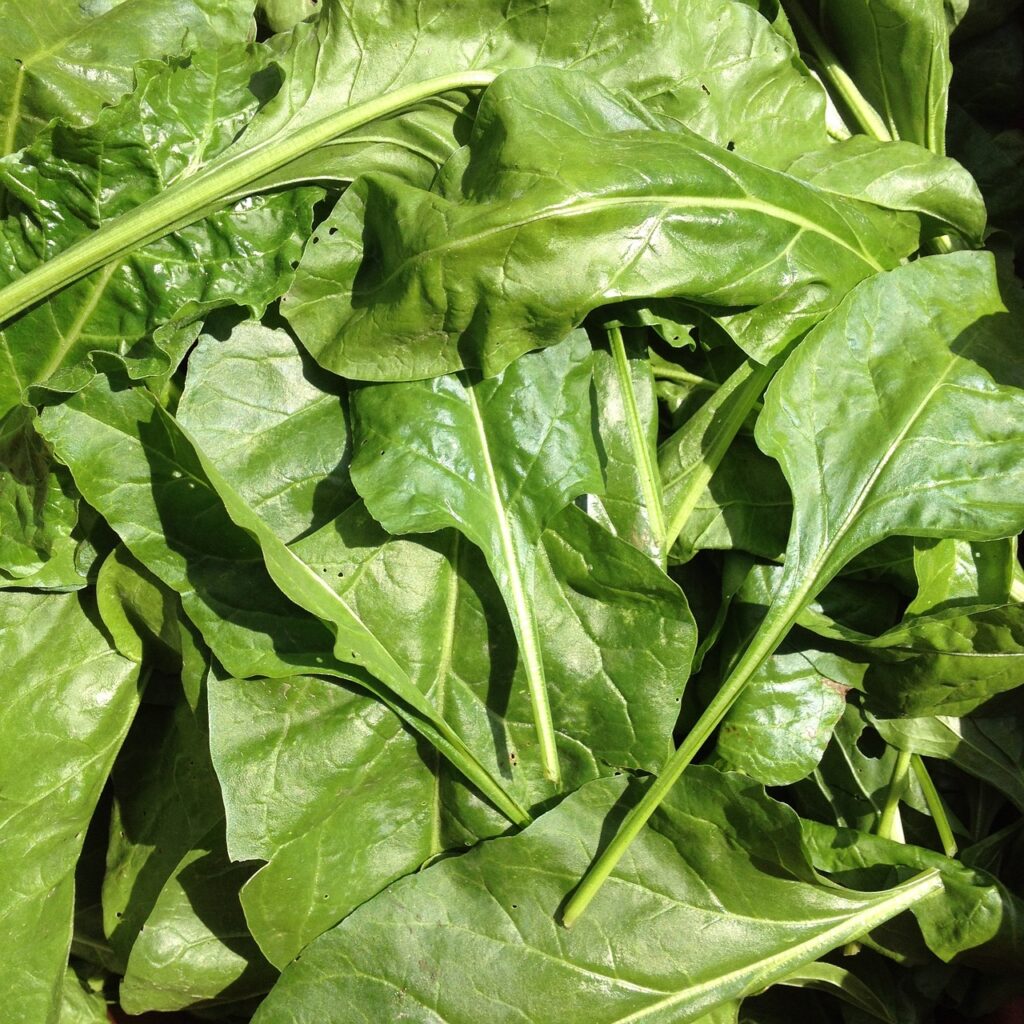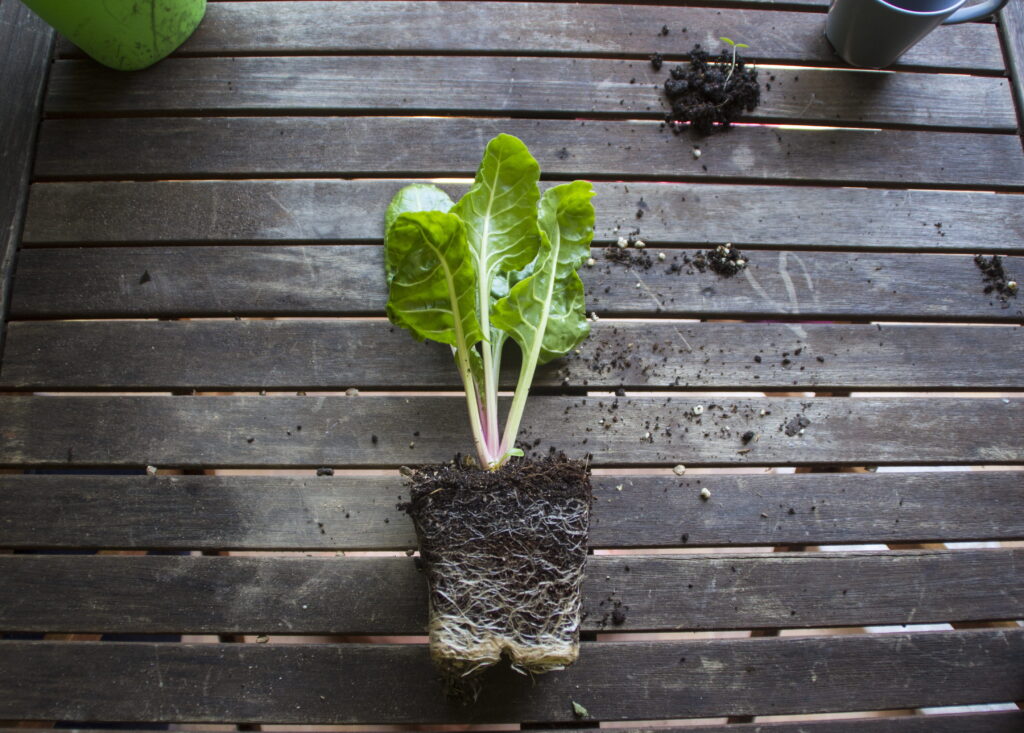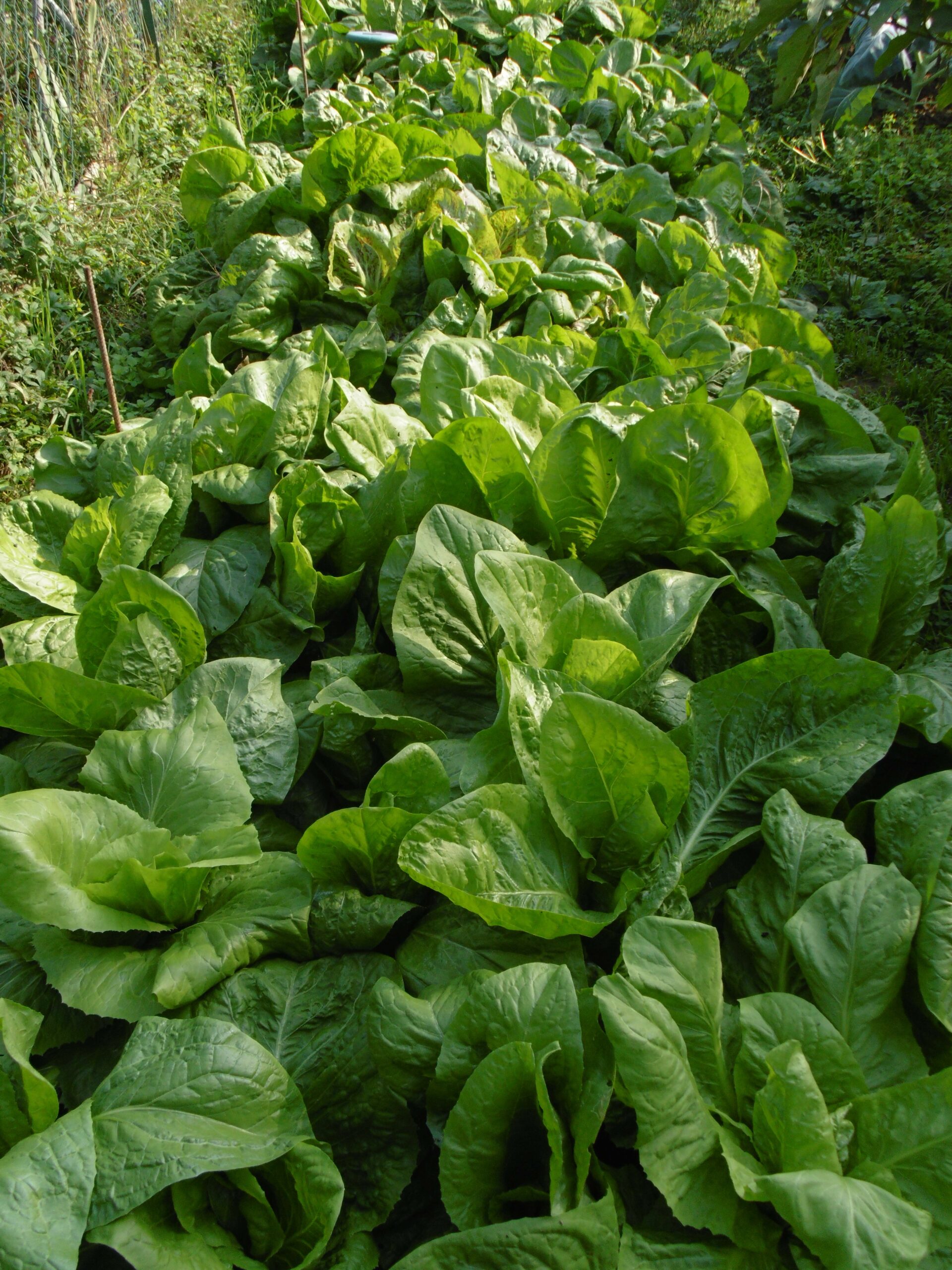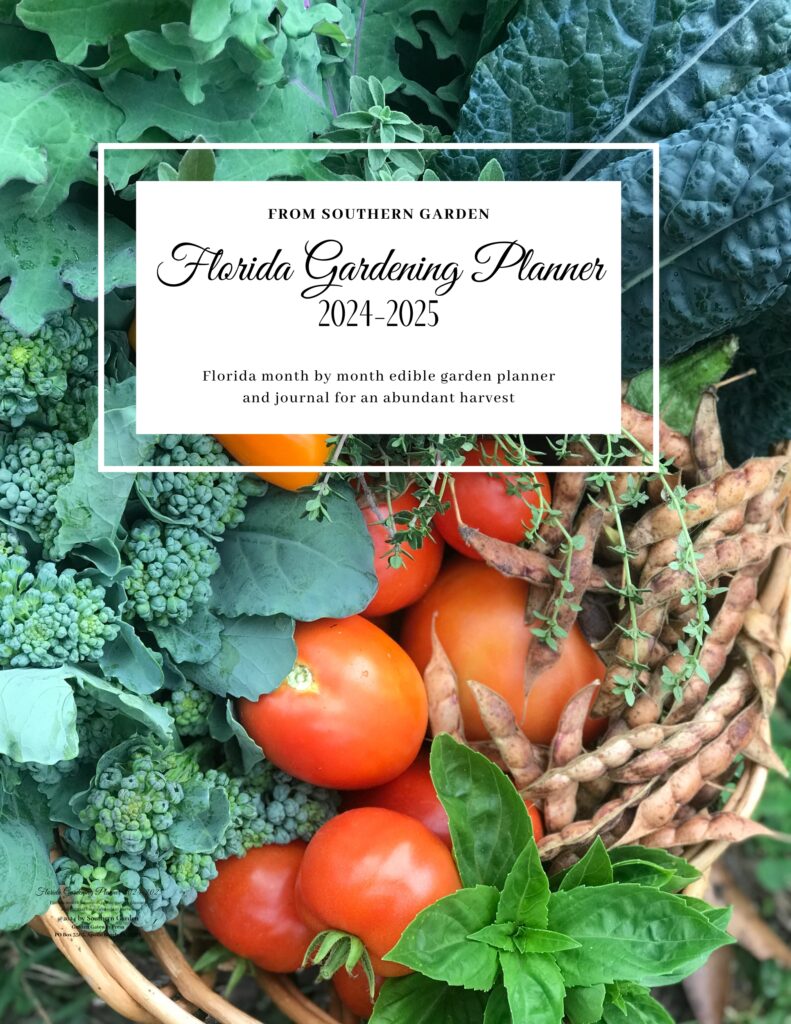Perpetual spinach chard, also known as perpetual Swiss chard or perpetual leaf beet, is a versatile and nutritious leafy green that’s a great addition to any vegetable garden.
It’s easy to grow from seeds and can provide you with a bountiful harvest over the next 18 to 24 months.
Basic Plant Characteristics
Development Phases: The chard goes through several phases: seedling, vegetative growth, and flowering. Most gardeners focus on the vegetative growth phase when harvesting the leaves.
Perpetual spinach is technically a biennial plant but is usually grown as an annual. It can live for 2-3 years with good care.
Once planted out into the garden, you should be harvesting the outer leaves in about 45-60 days after planting.
Light, Nutritional, and Watering Requirements
Perpetual spinach thrives in full sun to partial shade. It should receive at least 6-8 hours of sunlight daily.
Plant your chard in well-draining soil enriched with organic matter. Nitrogen-rich fertilizers can help boost growth.
Keep the soil consistently moist. Water deeply when the top inch of soil feels dry to the touch. Avoid letting the soil become waterlogged.

When to Start Perpetual Spinach Chard Seeds
To get a head start on the growing season, start your seeds indoors or undercover about 6-8 weeks before the last expected frost date in your area.
In milder climates, you can plant perpetual spinach chard in the spring and fall when tempertures are consistantly below 80°F.
Starting Seeds Indoors or Undercover
Selecting the appropriate seed starting mix is essential for healthy seedlings. It should be lightweight, sterile, and well-draining. You have two main options:
- Commercial Seed Starting Mix: Easily available at garden centers, these mixes are specifically formulated for seedlings. They are sterile, ensuring a clean environment for germination.
- DIY Mix: You can create your mix by combining equal parts of peat moss, perlite, or vermiculite, and a small amount of compost or well-rotted manure.
Avoid using garden soil, as it may contain pathogens and is less suitable for germination.
- Soak the seeds in water for a few hours before planting to improve germination.
- Use seed trays, cell packs, or small pots with drainage holes to avoid waterlogged soil.
- Fill your containers with a high-quality seed starting mix.
- Plant chard seeds approximately 1/2 inch deep in the seed starting mix.
- Gently press the soil over the seeds to ensure good soil-to-seed contact.
Chard seeds germinate best at temperatures between 65°F and 75°F (18°C to 24°C).
Provide ample light by placing the containers in a bright location. A south-facing windowsill or using fluorescent grow lights with a timer can ensure the seedlings receive 12-16 hours of light per day.
Maintain a consistent temperature and light regimen to encourage strong, healthy seedling growth.
Perpetual spinach chard seeds typically germinate in 7-14 days, depending on environmental conditions.
Ensure the soil remains consistently moist, but avoid overwatering.
Your seedlings will be ready for hardening off and transplanting when they have developed 2-3 true leaves and are sturdy enough to handle outdoor conditions.
Seedlings should have several sets of true leaves and be 4-6 inches tall.

Hardening Off
Before transplanting your chard seedlings, they need to acclimate to outdoor conditions through a process called “hardening off.”
Gradually expose the seedlings to outdoor conditions by placing them outdoors for a few hours each day, gradually increasing the time over a week or two.
Protect them from strong winds, direct sunlight, and extreme temperatures during this period.
Choosing a Planting Site
Select a location in your garden that receives ample sunlight. Partial shade is acceptable, but full sun is ideal in temperate climates.
However, in hot climates, such as those in Zones 9-11, perpetual chard appreciates a little shade during the brightest hourse of the day.
In these regions, you can also grow them over the winter when high temperatures is less of a factor.
Consider practicing companion planting by placing your chard near crops like beans, or under trellised vegetables to keep them from scorching.
Preparing a Garden Bed
Before transplanting or sowing seeds directly, prepare your garden bed.
Clear the area of weeds, rocks, and debris.
Incorporate organic matter, such as compost or well-rotted manure, into the soil to improve its fertility and structure.
Create rows or raised beds with a spacing of 10-12 inches between chard plants.
Sowing Perpetual Spinach Chard Directly
If you prefer, you can sow chard seeds directly into the prepared garden bed.
Plant the seeds about 1/2 inch deep and space them 2 inches apart in rows about a foot apart.
As the seedlings emerge, thin them to maintain a spacing of 6-8 inches between plants.
Caring for Perpetual Spinach Chard Plants
Water your chard consistently to keep the soil evenly moist. Mulch around the plants to retain moisture and suppress weeds. Use hay, straw, or finished compost.
You can apply a balanced, slow-release fertilizer according to the manufacturer’s instructions if your soil is poor.
Protect your chard against pests and diseases (see tips below).
Tips and Tricks
Keep an eye out for common pests such as aphids and caterpillars. We recommend an organic insecticidal spray containing Spinosad to treat for these insects.
Sluggo is a good organic treatment for slugs and snails, both of which like to snack on perpetual chard.
Avoiding and Treating Disease: Prevent root rot by planting chard in well-draining soil. Avoid overhead watering, which can lead to leaf diseases. Remove and destroy any infected plants promptly.
Periodically remove damaged or yellowing leaves to encourage new growth.
Interplant with aromatic herbs like basil or marigolds to deter pests.
Harvesting Perpetual Spinach Chard
Begin harvesting the outer leaves when they reach 6-8 inches in length.
Use clean scissors or a sharp knife to cut the leaves 1-2 inches above the base, leaving the central crown intact to continue producing.
Storing Perpetual Spinach Chard
Store unwashed chard leaves in a plastic bag or airtight container in the refrigerator. They can stay fresh for up to a week.
For long-term storage, consider blanching chard leaves and freezing them in airtight containers or freezer bags.

Using Perpetual Spinach in Your Cooking
Perpetual spinach chard is a versatile ingredient. Use it in salads, sandwiches, or as a substitute for spinach in recipes.
You can also cook chard by sautéing, steaming, or adding it to soups, stews, and stir-fries.
Don’t forget that chard stems are edible too; chop them and use them in recipes or pickle them for a tasty addition to salads and snacks.
By following these detailed steps and tips, you’ll be well on your way to growing a bountiful and healthy crop of perpetual chard in your own garden.
Enjoy the fresh, homegrown flavor in your culinary creations!




